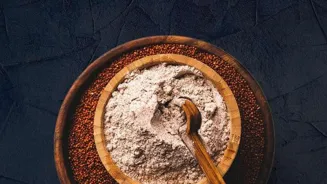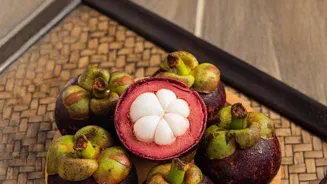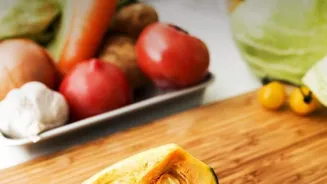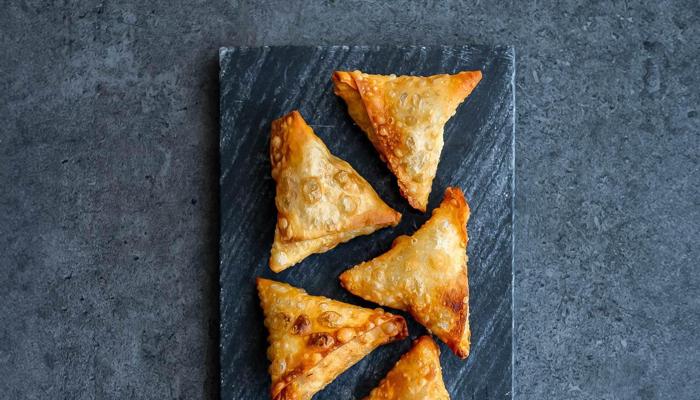Unveiling the Science of Baking: Elevate Your Pastries to Art! Dive into the magic behind perfect pastries
For many Indians, the smell of freshly baked goodies wafting from the oven is pure nostalgia, a happy
memory of festive occasions or a simple act of love. But baking isn't just about following a recipe; it's about understanding the science behind why ingredients behave the way they do.
Knowing this can elevate your baking from mere cooking to a true art form, ensuring consistent success and delightful pastries every time. From the humble maida to the magic of baking powder, each ingredient plays a vital role in the final product.
Let's delve into the fascinating world of baking science, exploring how these everyday items contribute to the perfect pastry.
Baking combines chemistry and art for delectable treats
Baking is a delightful blend of chemistry and art, where each ingredient interacts in a specific way to create something delicious. Take flour for example, the foundation of most pastries. Maida, or all-purpose flour, is the most common type used in Indian baking.
It contains gluten, a protein that develops when mixed with water, giving the dough its elasticity and structure. The amount of gluten developed determines the texture of the pastry. For a chewy naan, you might want to develop a lot of gluten by kneading the dough extensively.
On the other hand, for a melt-in-your-mouth biscuit, you'd want to minimize gluten development by gently mixing the ingredients. This is understanding the science, the purpose, and ensuring a top-quality baked item.
The better you understand, the more you can create recipes to your taste, and use available ingredients to produce something that your taste buds truly like.
Fats in baking enhance texture and flavor, choose wisely
Fats, like ghee, butter, or vegetable oil, add richness, flavour, and tenderness to pastries. They work by interfering with gluten development, preventing it from becoming too strong. This results in a softer, more crumbly texture.
Different fats also have different melting points, which affects the final product. Butter, with its lower melting point, contributes to a flaky texture in pastries like croissants or puff pastries. Ghee, with its distinct flavour, adds a traditional Indian touch to sweets and biscuits.
Vegetable oil, being a liquid fat, creates a more moist and tender crumb. The right fat can bring out flavours in your baking. When choosing your ingredients, keep the purpose in mind. Are you making a light dessert, or a heavy, crunchy snack?
The results can be amazing when you choose the best ingredients.
Sugar in baking: key roles, types, and experimentation tips for flavor
Sugar is more than just a sweetener in baking. It contributes to the browning of the pastry, adds moisture, and helps to tenderize the dough. Sugar also interacts with gluten, weakening it and preventing it from becoming too tough.
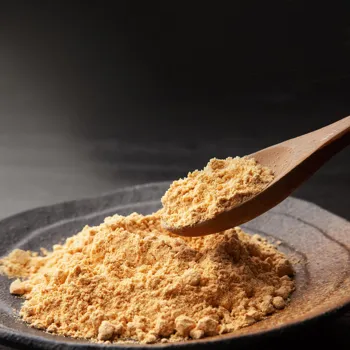
Different types of sugar have different effects on the final product. Caster sugar, with its fine granules, dissolves easily and is ideal for delicate pastries. Brown sugar, with its molasses content, adds a chewy texture and a caramel-like flavour.
Jaggery, a traditional Indian sweetener, imparts a unique flavour and a slightly darker colour. Sugar is your friend when baking. Do not be afraid to try out different flavours!
The best pastry chefs are the ones who have had the confidence to experiment and get a full idea of everything that the flavour can do.
Leavening agents create airy texture in baking
Leavening agents are what make pastries rise, creating a light and airy texture. Baking powder, a combination of baking soda and an acid, is the most common leavening agent used in home baking.
When baking powder is mixed with a liquid and heated, it releases carbon dioxide gas, which causes the dough to expand. Baking soda, on the other hand, needs an acidic ingredient, such as curd or lemon juice, to activate its leavening power.
Yeast is another type of leavening agent that produces carbon dioxide through fermentation. It's used in breads and other pastries that require a longer rising time. A proper leavening agent is important because if you do not handle yours properly, your baking might not rise.
This is the trick to getting a perfect bake at home.
Eggs add structure, richness, and moisture in baking
Eggs are a versatile ingredient in baking, contributing to structure, richness, and moisture. They act as a binding agent, holding the ingredients together. Egg yolks add fat and richness, while egg whites add structure and lightness.
Eggs also help to emulsify fats and liquids, creating a smooth and homogenous batter. When whipping egg whites, they trap air, creating a light and airy foam that can be used to make meringues or soufflés.
Understanding the role of eggs can help you adjust your recipes and achieve the desired texture. Some egg washes provide shine on top of your bakings. These tips and tricks can come in handy in the long run.
Experimentation is key to mastering baking, leading to signature pastries
Experimentation is key to mastering the art of baking. Don't be afraid to try substituting ingredients, adjusting quantities, and experimenting with different flavours. Keep a baking journal to record your experiments and note what works and what doesn't.
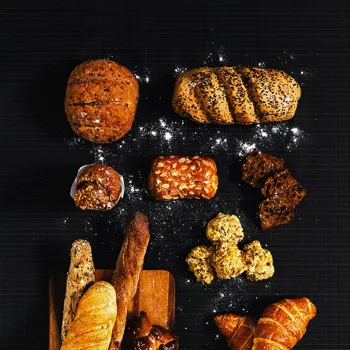
Over time, you'll develop a deeper understanding of the science of baking and be able to create your own signature pastries. Baking is a journey of patience, precision, and passion. So, put on your apron, gather your ingredients, and get ready to embark on a delicious adventure.
With a little bit of knowledge and a lot of practice, you'll be baking perfect pastries in no time!
AI Generated Content. Glance/InMobi shall have no liability for the content